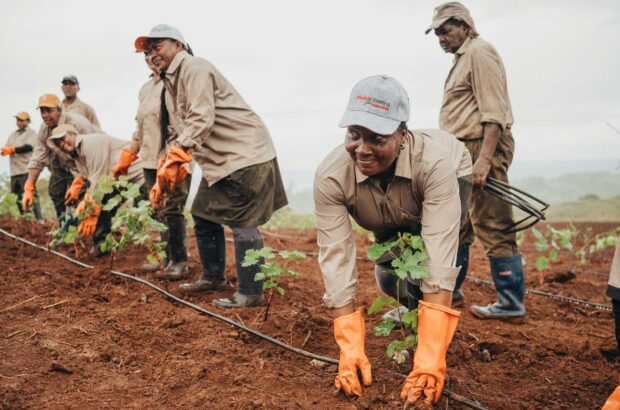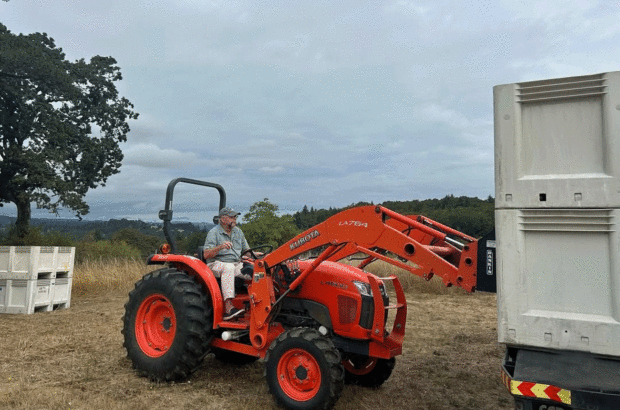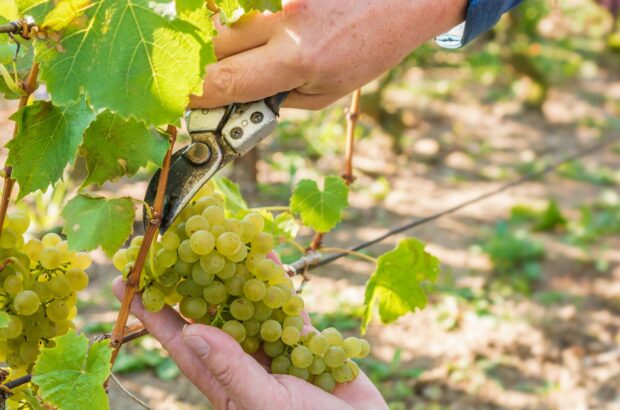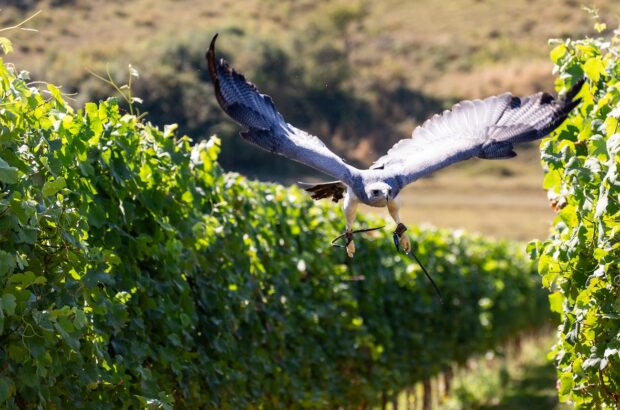Jane Anson explores the new winery project of Bonny Doon founder Randall Grahm in California.
Call me shallow, but there is something pretty exciting about receiving one of only 150 bottles produced of a new wine. Even more so when it’s part of a bigger project whose destination nobody, frankly, exactly knows.
This is Popelouchum. A place where even the name wants you to stop and think. It’s pronounced if you were wondering (and of course you were) Pop-loh-shoom – a name settled on by the Ohlone native Americans who were the original caretakers of the land that the grapes are now grown on.
It was unveiled as the name of Randall Grahm’s new estate in San Juan Bautista, California in 2011. The project itself started a few years earlier, when Grahm decided to sell off his high profile brands Cardinal Zin, Pacific Rim and Big House to focus on the more terroir-driven Bonny Doon (saying ‘wines of place are the only ones that matter’).
With the proceeds of the sale, he bought a 113 hectare site in San Benito County and set about, with classic Grahm understatement, to create a New World Grand Cru, and to ‘outsmart climate change’ while he was at it.
The local Monterey newspaper at the time called the move ‘Grahm’s Gamble’ because he announced that the entire estate was to be dry-farmed (the location is warm but not overly hot due to the nearby Pacific, and is classified as Meditterean in the Koppen Climate Classification). In place of irrigation, he was using a charcoal substance called biochar that increases water retention and promotes soil fertility. Oh, and he was growing and crossing various hybrid grape varieties from seed, hoping to develop drought-resistant grapes on land that had not been farmed for at least 75 years – although it’s quite possible that there was a vineyard here once as the road leading up to it is called Mission Vineyard Road.
And as hard as it is to believe for someone with 30 years of winemaking under his belt, Popelouchum is Grahm’s only vineyard of his own, as he has sourced grapes for Bonny Doon since losing vines to disease in the 1990s. He is currently awaiting Demeter certification for biodynamic farming, a system that Grahm believes will help encourage site-specific flavours in the final wines (‘although my allegiance is to the site and not to any specific practise’). The aim eventually is to end up with 100% estate sourced grapes (and if not, any bought grapes from 100% organic or biodynamic growers).
This is a man who is pretty used to being described as ‘revolutionary’ and/or ‘eccentric’, and christening the winery with a ceremony performed by members of the Ohlone native Americans went some way to stoking up the headlines. But in fact Popelouchum is genuinely ground-breaking, and might prove hugely beneficial to wine growers across the State.
‘We have approximately 70 acres of plantable land for vines,’ explains Grahm. ‘We are planning to dedicate around 40 acres to conventional varieties like Rossese (Tibouren), Furmint, Ruche, Grenache Blanc/Gris, Syrah, and approximately 30 acres to mixed plantation which will be composed of vines grown from crosses. Each vine will be genetically distinctive from the other, but all grown from common parents. Among the varieties being considered for parenthood are Furmint, Picolit, Verduzzo, Ciliegiolo, Rossese, Pignolo, Vermentino. We are looking for one parent with strong drought tolerance characteristics, upright growth, and the other with the presence of certain biochemical characteristics that enable it to resist oxidation’.
‘My guiding principle as far as selection of new varieties to be planted,’ he adds, ‘is to find the ones that are the most self-contained, so requiring the minimal of intervention. In California, this tends to mean varieties that are more drought tolerant, and that generally translates to southern Rhône or southern Italian’.
The wine that I received this week was a Grenache, from vine cuttings rather than seedlings (although they are growing an acre of seedlings also obtained by self-crossings from the Rayas vines). And before you feel too disappointed, these were ungrafted cuttings from Chateau Rayas, harvested from a nursery row and dry-farmed in California. This first harvest saw spontaneous fermentation from natural yeasts, with no additions in terms of acid, sugar, bacteria, all finished off with very low sulphur.
It’s still early, and still a gamble, but if my tasting is anything to go on, this is a new arrival in Californian wine that is seriously worth tracking. Although for a man who started Bonny Doon off in the 1980s as, in his own words, ‘a foolish attempt to replicate Burgundy in California’, there is still one disappointment.
‘Of all of the grapes that we’ve observed,’ he says, ‘the biggest disappointment has been Pinot Noir, which I guess is some sort of poetic justice’.
The wine
Popelouchum Grenache 2015
Exceptional varietal character, this is recognisably great Grenache, pure, elegant, beautiful finesse, with light touches of liquorice root, crushed rasperry fruits, white pepper, extremely gentle oak influence from small 114 litre barrels, no new oak (he hopes in the future to change this to clay amphoras). Medium weight and colour, which might be surprising in California, but there is a huge persistency to the palate, and a sense of uplift that runs from the first moment to the last, keeping you on your toes and waiting for the next flavour to reveal itself. 13.9%abv.
93/100, if fair to score in a wine’s first year.
More Jane Anson columns

Anson: What Thomas Jefferson did in Bordeaux
And an ill-fated trade embargo...

Anson: March of the Loire
Jane Anson meets Loire wine pioneers...

Anson: What now for Bordeaux and UK merchants in 2017?
Jane Anson analyses the numbers...

Anson: Why a decline in soil health should worry all wine lovers
How many earthworms does it take to make fine wine?...

Jefford and Anson: Most read columns of 2016
Favourite pieces from our Decanter.com columnists....

Jane Anson’s top fine wines of 2016
It makes quite a list...
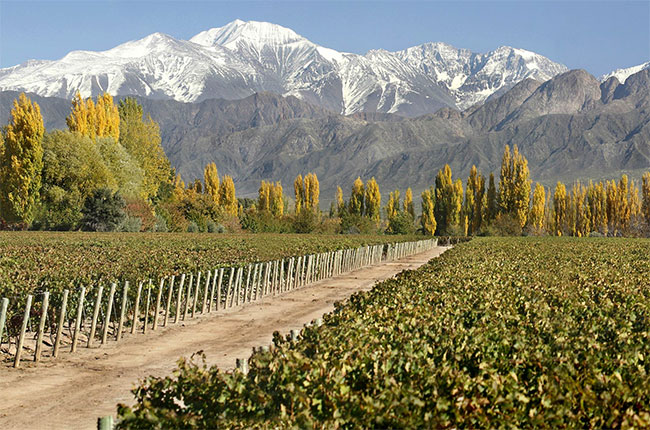
Inside Cheval des Andes – A New World ‘grand cru’
Jane Anson interviews the team behind Cheval des Andes...

Anson: Secrets of Château Lafleur – a Decanter interview
Jane Anson interviews owner Baptiste Guinaudeau...



